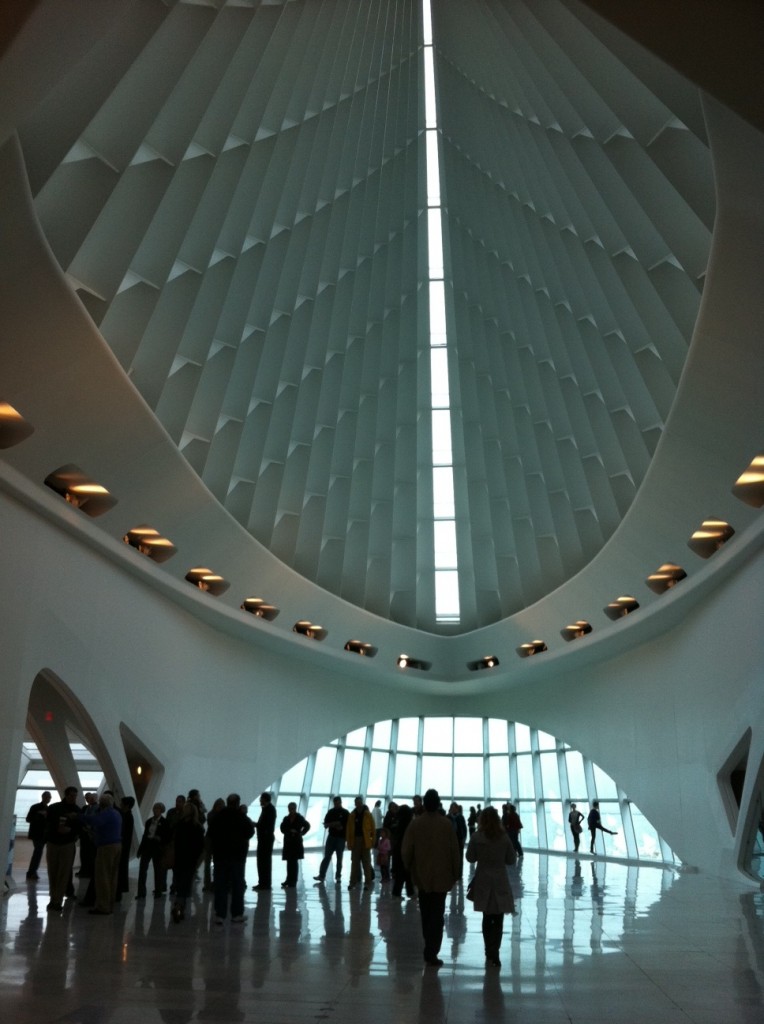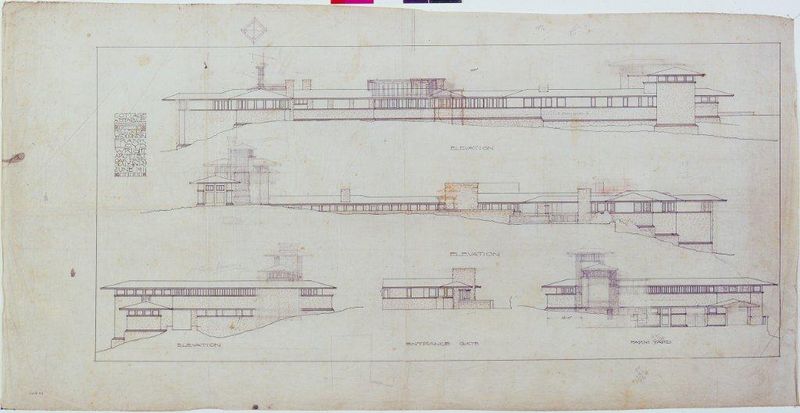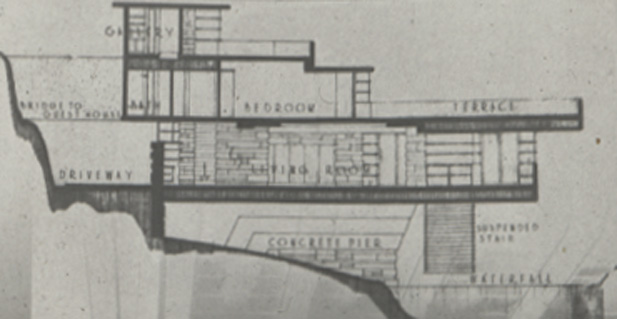My husband Paul shook me awake the morning after I arrived in Milwaukee at 3am just 6 short hours before. Groggily I resisted being woken up, but he insisted. He said, “you’re going to want to see the Frank Lloyd Wright exhibition at the Milwaukee Art Museum”. Grudgingly I acquiesced and dragged my tired self out of bed.
But once we pulled up to the museum, my face brightened and I felt a rush of adrenaline. It was a dark, rainy spring day in Milwaukee, but the museum addition jutting out onto Lake Michigan by Santiago Calatrava looked stunning nevertheless.
The Calatrava addition to the Milwaukee Museum of Art. Photo from It is Creation.
As I fought through the wind and rain to make my way into the shelter of the building, my breath was once again taken away. This is what I saw:
The lobby of the museum. Photo by the author.
A better architectural interior I have yet to see. But this was just the beginning of my wonderful architectural journey that morning. The actual FLW exhibition was brimming over with people. There was a big line waiting to get in. It was the last day of the exhibit after all and people from all around the region had come to see it.
I got my headphones and I could hardly wait to get in. I could see a large reproduction of the man himself, FLW, at one of his Taliesin studios hovering over a model from my place in line. Once I was in, the exhibit did not disappoint. It was a thorough examination of all of FLW’s ideas (even the bad ones like Broadacre City), from the beginning of his career in Spring Green, WI to the end in Scottsdale, AZ.
Too bad the last day was so crowded, otherwise I would have spent much more time savoring each piece and reading every little word of explanation by its side. Despite the crowds, I did get to peer into the scale model of the Johnson Wax building in Racine, WI. I have been to the building itself, which was a very cool experience, but the model brought the whole thing together for me: the beautiful upside down lily pad columns, the daylight that streamed into the gorgeous atrium from the glass roof that ties the lily pads together and then all the meticulously designed desks scattered through out the space.
Another wonderful aspect of this exhibit was the collection of FLW’s actual sketches and construction drawings, all hand-drawn of course. The drawings I was most fascinated by were his sections. Architects communicate their ideas through several types of drawings, the basic ones being the floor plan (looking down on a building, about four feet off the ground), the elevation (looking straight ahead at the building) and finally the section (cutting a slice through the building so you can see all of its guts).
I could tell the FLW enjoyed working in section, which to me is the most challenging perspective to draw because it requires you to really know how the building works. The reason the section was the most interesting drawing in the exhibit is because FLW not only thoroughly understood his buildings but he thoroughly understood the terrain they sat on.
In fact, the way his buildings sat on the earth was of utmost important to FLW. Think about it, he named his home and studio Taliesin, which means “shining brow”. He did this because he positioned his building on the brow of the hill of his ancestral land, and notably not on the crown of the hill.
Here are some elevations of Taliesin, notice the beautiful way the building engages the ground it sits on:
Image from The Curated Object
And here’s the ultimate example of the way FLW expertly fit a building right into the side of a cliff at his Kaufman House in Pennsylvania:
The section of the Kaufman House (sorry about the blurriness!). Image from home.manhattan.edu.
Seeing the way FLW worked in section was a real honor for a young architect like me. And FLW’s profound influence on great current day architects like Calatrava himself, whose building we inhabited while we enjoyed the exhibit and who very much designs in section wasn’t lost on me or the curators of the exhibit.























Wow – stunning. The exterior shot is just as breathtaking as the interior.
Yes, it’s an exquisite building Monna, well worth visiting sometime if you’re ever in the area!
Looks like a cool exhibit & of course an amazing building.
I love the PHX Art Museum, but from the outside its so danged ugly (and turned backwards from the street). I wish someday a future expansion can give us an iconic museum like Milwaukee’s or Denver’s, which are both lovely.
I’ve never been to Denver’s art museum Will, now I want to check it out. You’re right, even though the Phx Art Museum is a great building, its street presence is entirely too subtle for the civic and cultural type of building that it is…